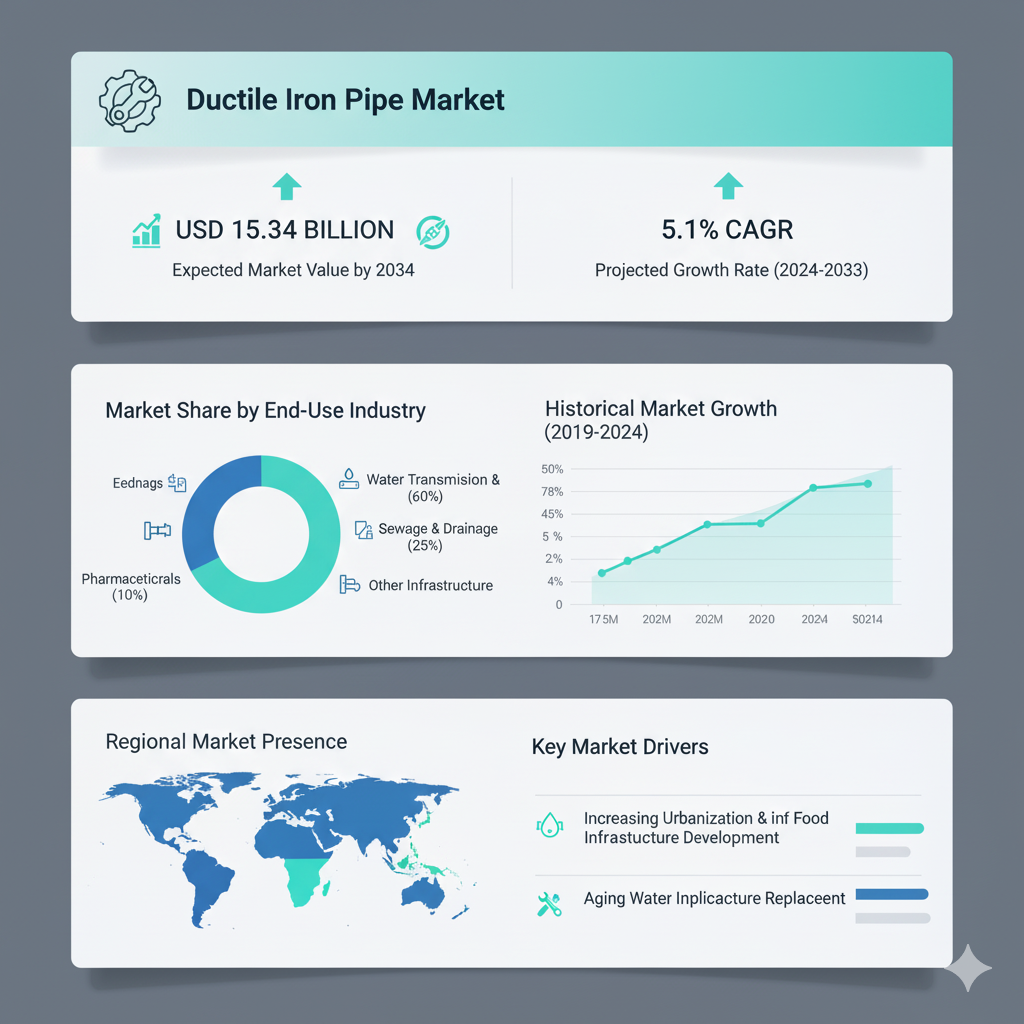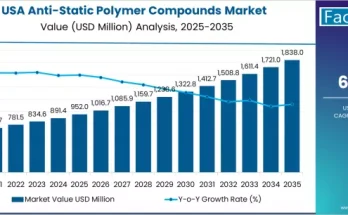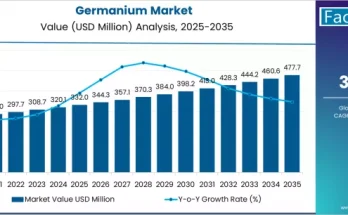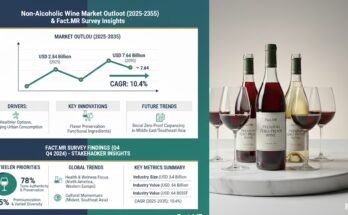The global ductile iron pipe market size is estimated to be valued at US$ 9.33 billion in 2024 and is projected to reach US$ 15.34 billion by the end of 2034, expanding steadily at a CAGR of 5.1 % over the forecast period. This growth is underpinned by the rising demand for robust, long-lasting pipe systems in municipal water supply, wastewater handling, and irrigation projects. Rapid urbanization, the replacement of aging infrastructure, and stricter regulatory mandates on drinking water quality and leakage control are major factors driving market expansion.
Segment Insights: Coatings, Applications & Technical Choices
A defining feature of this market analysis is its detailed classification by external protection and coating technologies, including Zn / Zn-Al + Bitumen / Epoxy, PE (Polyethylene), PU (Polyurethane), Ceramic Epoxy, and Electrosteel. Among these, Zn / Zn-Al + Bitumen / Epoxy coatings hold a prominent position owing to their superior corrosion resistance, adaptability across different soil conditions, and compliance with potable water standards.
In terms of applications, ductile iron pipes serve multiple sectors such as potable water distribution, sewage and wastewater management, irrigation, and various industrial uses. This segmentation allows manufacturers and infrastructure planners to select the most suitable coating and lining combination depending on the expected chemical exposures, internal pressures, and design longevity. The technological adaptability and strength of ductile iron make it the preferred choice for long-term projects requiring durability, reliability, and minimal maintenance.
Recent Developments & Strategic Moves
In recent years, several developments have significantly shaped the competitive landscape of the ductile iron pipe market. Leading manufacturers are incorporating smart sensors and Internet of Things (IoT) technologies into pipe systems to monitor parameters such as pressure, temperature, and flow in real time. This enables predictive maintenance, early leak detection, and improved operational efficiency across long service lifetimes.
Manufacturers are also focusing on specialized joint systems designed to address installation challenges in complex geographies or retrofitting projects within urban infrastructure. Advanced joint designs that allow deflection and easy alignment have become a focal point in enhancing ease of installation. In addition, the industry has witnessed upgrades in coating and process technologies. Many firms are investing in improved epoxy bonding, hybrid ceramic linings, and automation in casting and finishing to enhance uniformity, reduce defects, and cut production costs.
Another major trend involves geographic expansion, with key players extending operations or forming partnerships in emerging regions such as South Asia, the Middle East, and Africa to capitalize on government-funded infrastructure and water projects. Despite its strengths, the ductile iron pipe sector faces growing competition from lightweight and lower-cost alternatives like PVC and HDPE pipes, particularly in low-pressure applications. These alternatives often benefit from easier handling and installation, forcing iron pipe producers to further emphasize performance, longevity, and sustainability.
Key Players and Competitive Analysis
The competitive landscape of the ductile iron pipe market includes a mix of global leaders, regional specialists, and emerging challengers. Some of the key players include Saint-Gobain PAM, Jindal SAW Ltd., Kubota Corporation, Tata Metaliks, AMINTIT, U.S. Pipe, McWane Inc., American Cast Iron Pipe Company, Duktus GmbH & Co. KG, Electrosteel Steels Ltd., Kurimoto Ltd., Rashmi Metaliks, Svobodny Sokol Poland, and Electrotherm.
These companies compete through technological differentiation, cost efficiency, scale of production, geographic reach, and strategic partnerships or acquisitions. In mature markets such as North America and Europe, leading firms are focusing on upgrading existing systems, offering low-leakage solutions, and providing extended warranties. In contrast, in emerging economies, companies are establishing regional manufacturing hubs to reduce logistics costs and meet growing demand efficiently.
Smaller and niche players often concentrate on specialized coatings like ceramic epoxy or Electrosteel, as well as unique diameters and applications, allowing them to capture segments that are less appealing to mainstream competitors. This blend of global scale and regional specialization maintains a competitive and innovative market environment.
Challenges and Competitive Pressures
Despite its positive outlook, the ductile iron pipe market faces several challenges. Substitution threats from plastic alternatives like PVC and HDPE remain significant, especially in applications that do not require the high strength and pressure resistance of ductile iron. The industry also grapples with high capital intensity, as setting up iron casting and coating lines requires substantial investment and compliance with strict quality standards.
Fluctuations in raw material costs—such as iron ore, alloying metals, and epoxy resins—further pressure profit margins. Additionally, coating or lining failures can lead to corrosion and performance issues, making rigorous quality control and R&D investment essential for maintaining customer trust and long-term reliability.
Request for Discount: https://www.factmr.com/connectus/sample?flag=S&rep_id=4182
Buy Now at USD 4500: https://www.factmr.com/checkout/4182
Check out More Related Studies Published by Fact.MR Research:
Super Magnetic Particles Market: https://www.factmr.com/report/super-magnetic-particles-market
Polyalphaolefins Market: https://www.factmr.com/report/polyalphaolefins-market
Ethylene Bis Stearamide EBS Market: https://www.factmr.com/report/ethylene-bis-stearamide-ebs-market
Hydrocarbon Waxes Market: https://www.factmr.com/report/hydrocarbon-waxes-market



